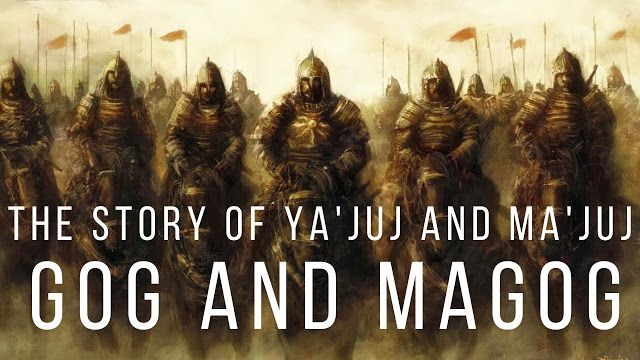The Wall of Yajuj and Majuj: An In-Depth Exploration
In the intricate tapestry of Islamic eschatology, the tale of Yajuj and Majuj (Gog and Magog) is a significant thread. This narrative, deeply rooted in Islamic tradition and Quranic scripture, not only provides insight into ancient beliefs but also paints a vivid picture of end-times scenarios. This article delves into the historical and eschatological aspects of Yajuj and Majuj, exploring the origins of their confinement, the construction of the wall that separates them, and the prophesied events leading up to their eventual release.
Understanding Yajuj and Majuj
Yajuj and Majuj are mentioned in the Quran in several places, primarily in Surah Al-Kahf (18:94-98) and Surah Al-Anbiya (21:96). They are depicted as two barbaric tribes that, due to their immense hostility and corruption, were confined behind a great wall built by Zulqarnain, a just and powerful ruler. Their release is foretold as a sign of the approaching Day of Judgment, where their destructive nature will play a pivotal role in the final events of the world.
याजूज और माजूज की दीवार मिल गईं ! History Of Gog & Magog in hindi ! Yajuj Majuj Ka Waqia in Islam
The Quranic Depiction
In Surah Al-Kahf, Zulqarnain encounters the tribes of Yajuj and Majuj during his travels. The Quran describes these tribes as causing great mischief and corruption on Earth. To protect the people from their rampant chaos, Zulqarnain builds an impregnable barrier made of iron and copper between two mountain ranges. This wall is not only a physical barrier but also symbolizes a divine intervention to preserve order and prevent widespread destruction.
The Construction of the Wall
The Architect: Zulqarnain
Zulqarnain, whose identity has been debated among scholars, is often identified with historical figures such as Alexander the Great or Dhu al-Qarnayn, a pre-Islamic Arabian king. His construction of the wall is depicted as a divine mission to curb the rampant destruction caused by Yajuj and Majuj. Zulqarnain’s ability to build such a formidable barrier signifies his divine support and authority.
Materials Used
The wall described in the Quran is composed of iron and copper, materials that are not only durable but also resistant to corrosion. This choice of materials emphasizes the wall's purpose as a permanent blockade. Historical and theological interpretations suggest that the wall was constructed with advanced engineering techniques, highlighting the technological prowess of Zulqarnain's era.
The Wall's Structure
According to Islamic tradition, the wall was built between two mountains, creating a natural fortification. The construction involved layering iron and copper to create a barrier so strong that it could withstand any attempts to breach it. This structure reflects the wall’s purpose: a complete separation between the chaotic tribes and the rest of the world.
Eschatological Significance
The Prophecy of Release
Islamic eschatology holds that the wall of Yajuj and Majuj will remain intact until the end times. It is prophesied that as the Day of Judgment approaches, the barrier will begin to deteriorate. This event will be marked by the release of Yajuj and Majuj, whose destructive forces will be unleashed upon the world, causing unprecedented chaos and turmoil.
Signs of the End Times
The release of Yajuj and Majuj is one of the major signs of the impending Day of Judgment. This event is expected to be accompanied by other apocalyptic signs, including the appearance of the Dajjal (Antichrist), the descent of Jesus (Isa), and the final battle between good and evil. Their emergence will signal a period of intense trials and tribulations for humanity.
Theological and Symbolic Interpretations
Symbolism of the Wall
In addition to its physical presence, the wall symbolizes divine protection and the ultimate separation between chaos and order. It represents the divine wisdom in managing the balance of good and evil in the world. The wall's eventual destruction serves as a reminder of the transient nature of worldly barriers and the ultimate sovereignty of divine will.
Yajuj and Majuj in Islamic Thought
The tribes of Yajuj and Majuj are often interpreted as symbols of rampant corruption and moral decay. Their release is seen as a manifestation of the end times when moral and social structures will be severely tested. Their destructive nature serves as a warning of the consequences of widespread corruption and the need for spiritual vigilance.
Modern Interpretations and Theories
Historical and Archaeological Perspectives
There have been various theories about the historical and geographical context of the wall. Some suggest that it could correspond to ancient fortifications or walls built in different eras. However, these theories remain speculative and are not universally accepted within Islamic scholarship.
Contemporary Reflections
In modern times, the story of Yajuj and Majuj is often discussed in the context of global challenges and crises. The themes of chaos, destruction, and divine intervention resonate with contemporary issues, prompting reflections on moral and ethical conduct in a rapidly changing world.
Conclusion
The wall of Yajuj and Majuj stands as a monumental symbol in Islamic eschatology, representing both a physical and metaphysical barrier between order and chaos. Its construction by Zulqarnain and the prophesied events of its eventual destruction highlight significant themes in Islamic thought, including divine justice, moral integrity, and the ultimate power of divine will. Understanding this narrative provides deeper insight into the complexities of Islamic teachings on the end times and the moral lessons embedded in these eschatological beliefs.













If you have any doubts. Please let me know.